»Selten hat mich ein Gespräch so gefesselt – und selten eines so beunruhigt,« schreibt Joachim Telgenbücher, Ressortleiter Geschichte und Redaktionsleiter Geo Epoche in seinem Editorial (Bestellung des Hefts hier)
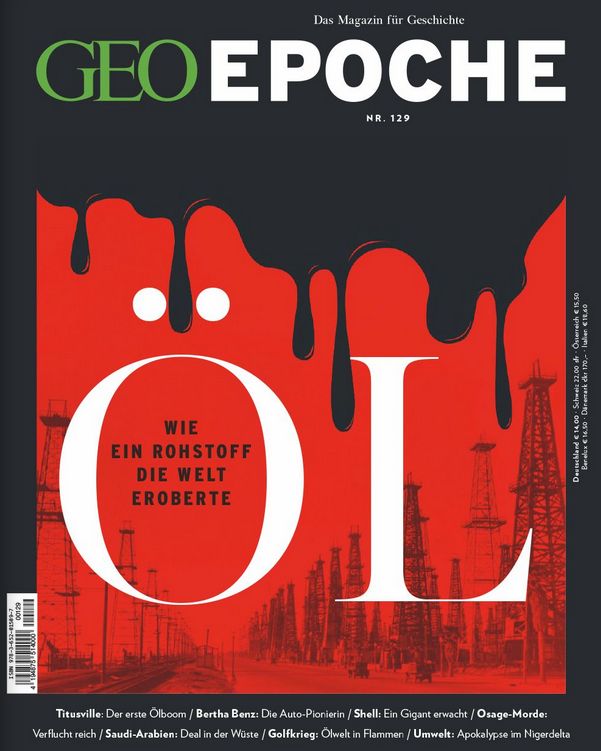
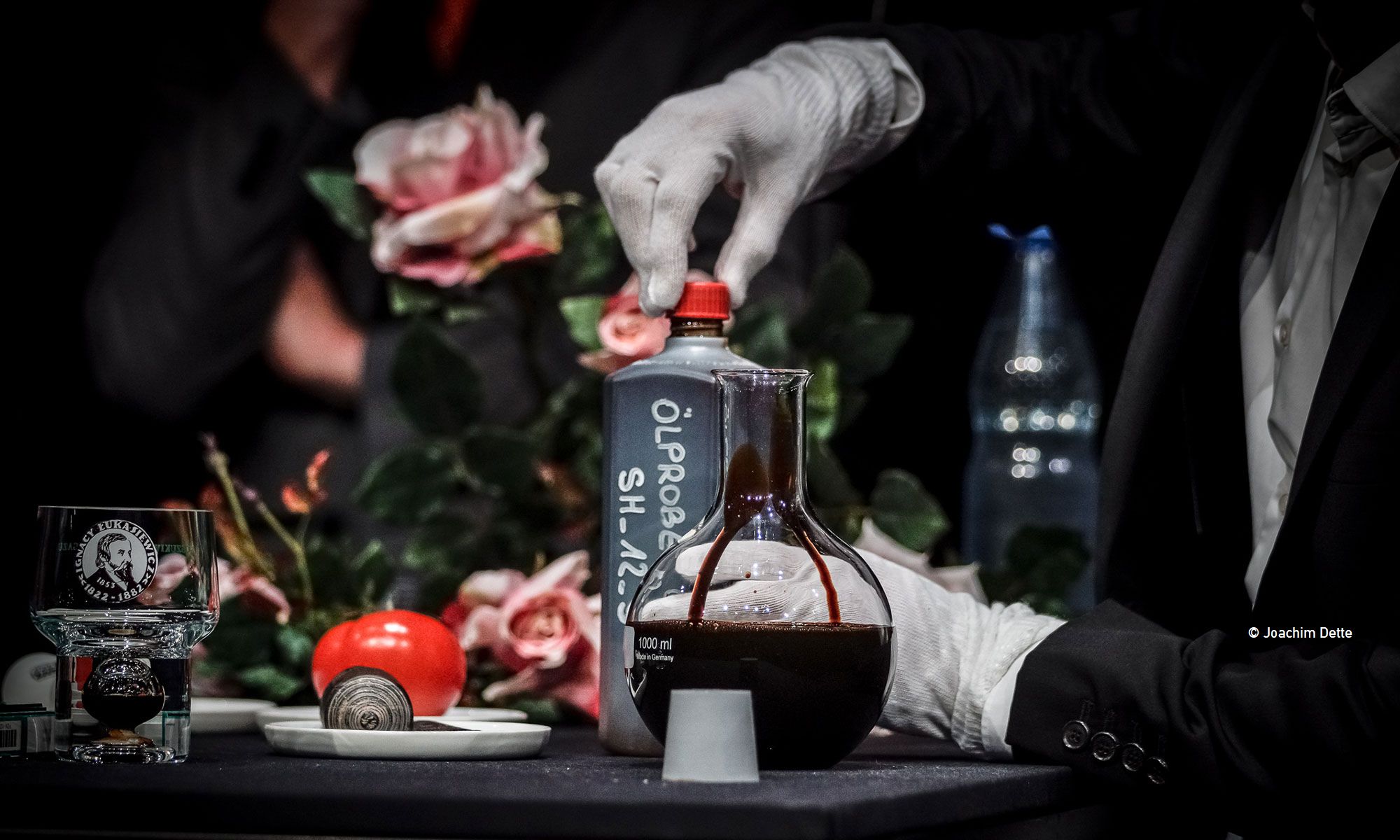
understanding petro modernity
»Selten hat mich ein Gespräch so gefesselt – und selten eines so beunruhigt,« schreibt Joachim Telgenbücher, Ressortleiter Geschichte und Redaktionsleiter Geo Epoche in seinem Editorial (Bestellung des Hefts hier)

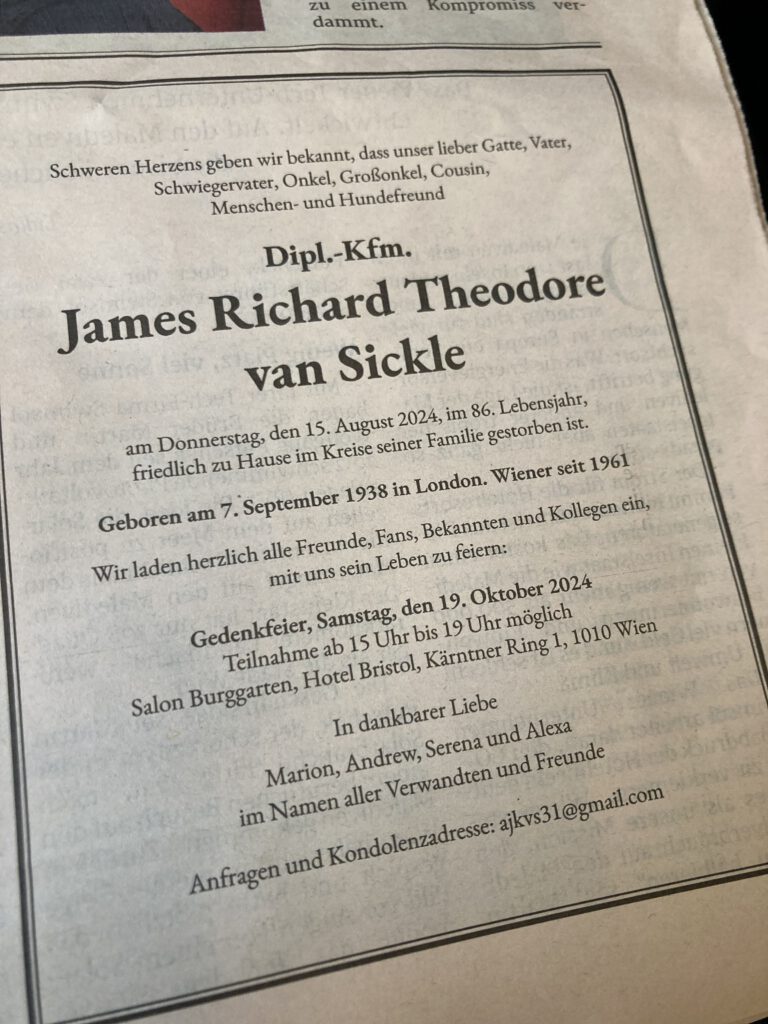
James van Sickle was a generous friend of our project since in 2013 he opened his family archives to our work, those of a Scottish-Huguenot Canadian-Galician-Romanian-Austrian oilman. In 2022, he became the only private sponsor of the translation of our German language ‘Atlas of Petromodernity’ into his English mother tongue—putting the name of van Sickle alongside those of the Goethe- and a Max Planck Institutes. In fact, at least three essays in our book (‘Pumpjack’, ‘Adventurers’, ‘Animals in Oil Fields’), have a direct relation to him and his archive. We were happy to send him the news that the book was finally published this summer, though he could not see the result any more.
James van Sickle was born in London in 1938. He lived in Vienna, Austria since 1961. Until he sold the company in the 1990s to OMV AG (Österreichische Mineralölverwaltung AG), he was head of what was founded as ‘Tiefbohrunternehmen Richard Keith van Sickle’ in 1937 by his father Richard Keith (1899-1961) and handed over to James in the early 1970s after an agonizingly long inheritance dispute.
James was the descendent of one of the families of adventurers who followed the global routes of oil in the late nineteenth century. Through his mother Dorothea Alice Cooke-Yarborough he also had an aristocratic background. To explain to his children “why we are nomads” he wrote a family chronicle that stretches from Sudan, Canada, the Middle East, and Austria. His grandfather and uncle had started drilling on oil in Petrolia, Ontario in the nineteenth century, then as many Canadian specialists from that place—called ‘hard oilers’—went to Galicia in the Habsburg Empire (now Ukraine), and further to Australia and Romania.
There, in Câmpina, James’ father, Richard Keith van Sickle, was born in 1899. His story connects family and world history in the most intimate way which made it the subject of our ‘Adventurer’ essay in the atlas. And since it was James who brought all this to us, by his archival material, hís chronicle, and his detailed explainings, is seems right to retell his father’s story in our orbituary to him. Keith van Sickle studied mechanical engineering in Cambridge and after working in oilfields in Romania in the 1920s, he turned towards Austria. For some years he owned a small castle and manor at Marbach in Upper Austria, at a place that by coincidence later lay some hundred meters away from the Mauthausen concentration camp. In the mid-1930s, he acquired mining claims at Neusield/Zaya at the Vienna Bassin. As early as 1937 van Sickle was forced to cede part to Deutsche Petroleum AG. It was here where, after the Anschluss—the annexation of Austria by Nazi Germany in 1938—that on behalf of Deutsche Petroleum AG, van Sickle drilled the most productive oil well in the territory of Greater Germany at St Ulrich, Neusiedl/Zaya. On Kodak color amateur footage from 1939 we see Reichsstatthalter Arthur Seyss-Inquart walking by at the festivities to open the well, and then van Sickle. While a dual power of attorney, granted to his lover Elfriede Krasa and trustee Hermann Fritsche, took care of business during wartime, van Sickle himself was to be found on the other side of the front, fighting against an army fuelled by this oil. He trained as a pilot in the First World War, and from 1939 onwards, he served as a major in the British Royal Engineers Corps in North Africa, and later as lieutenant colonel and oil-attaché in Baghdad and Tehran. Meanwhile, in London, the German Luftwaffe was laying waste to his wife Dorothea’s mansion in genteel Sumner Place Nr. 2, once used to mortgage Austrian mining claims. In 1945, van Sickle returned to Vienna via Indonesia. His oil fields had suffered thoroughly through brutal German war exploitation and they sat in the Soviet zone. But van Sickle was used to dealing with Soviets from his time in Tehran, and decided to stand up to them. Based on a Russian tip, he acquired a magnificent mansion in Baden near Vienna, and was named in the Staatsvertrag, the treaty which guaranteed Austria’s independence in 1955. He died in 1961 from bladder cancer, and Elfriede Krasa fought desperately to not let James get hold of the company.
After a long decade of missed investment into the old infrastructure James van Sickle could restart with his team in early 1970s. Photo albums show the life of both the company and family at Neusiedl, and the challenges to operate with old and outdated machinery. A refinery and laboratory that was put into place to also profit from downstream added value was managed not at least by help of Marion, James’ wife who was trained as a chemist. And we see long trains with his logo shipping van Sickle oil and products into the world. But productivity was difficult to keep, and in the 1990s James sold the company, the wells and infrastructure to OMV. His former employees still kept the spirit of a certain independence. When we started in 2012 with Rohstoff-Geschichte to access unofficial documentations of the Austrian oil industry we could integrate a lot of photographs and even films from proud van Sickle workers into our digital collection and in one case later into our atlas.
It was during this project, in 2013, when James van Sickle kindly opened his private archives to our research. More than a thousand documents such as letters, photographs, a drilling diary from Romania 1925, and some unique amateur film footage from the oil fields from the 1930s were digitized and put into the archives of the Geological Survey of Austria (GBA, now GeoSphere Austria).
In long meetings at the lobby of Hotel Bristol in Vienna or at his home at one of the most beautiful places of Vienna in the middle of vineyards, we got to know James van Sickle as a subtle and witty storyteller—in his distinguished Austrian German with just a slight and genteel British accent. We learned about his racing cars (a Lotus Eleven) in his “playboy years”, about leading a company in 70s and 80s Austria, about war times between London, Vienna, and Neusiedl—about global oil history in the twentieth Century through the intimate looking glass of a family history—that in this unique case we luckily were offered by James.
We express our deep condolences to his wife and three children, and we hope to keep James van Sickle’s and his family’s memory alive through our work.
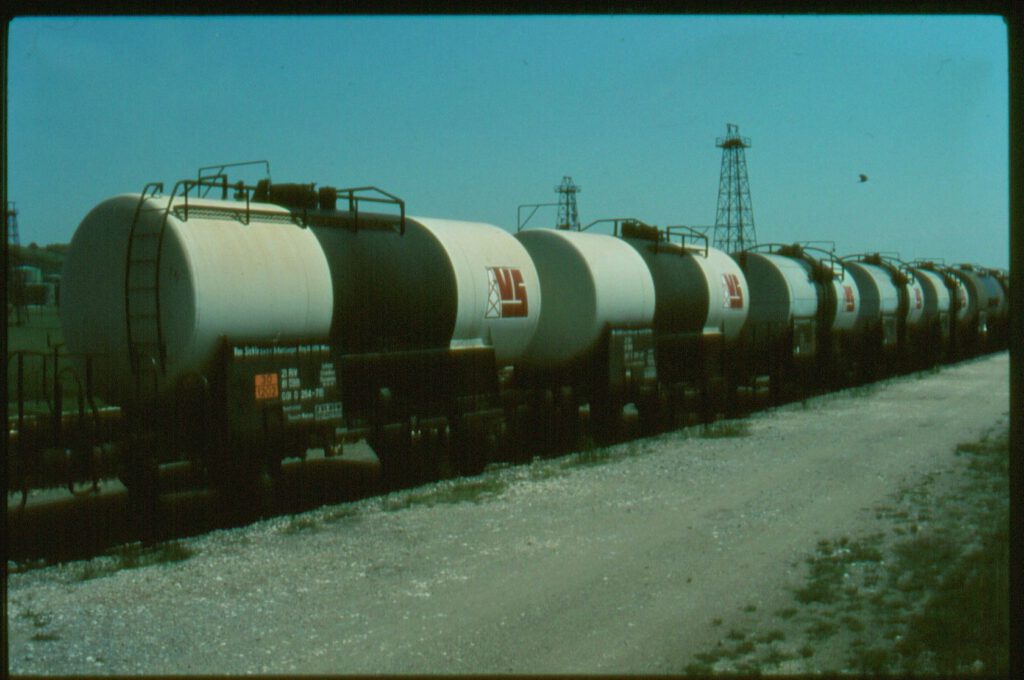
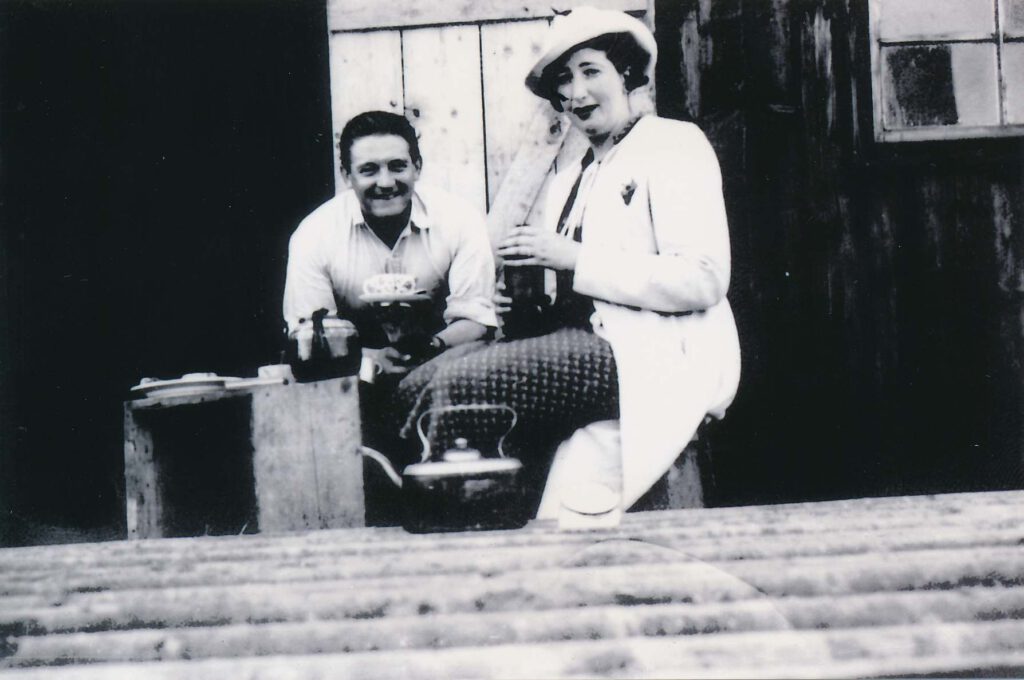
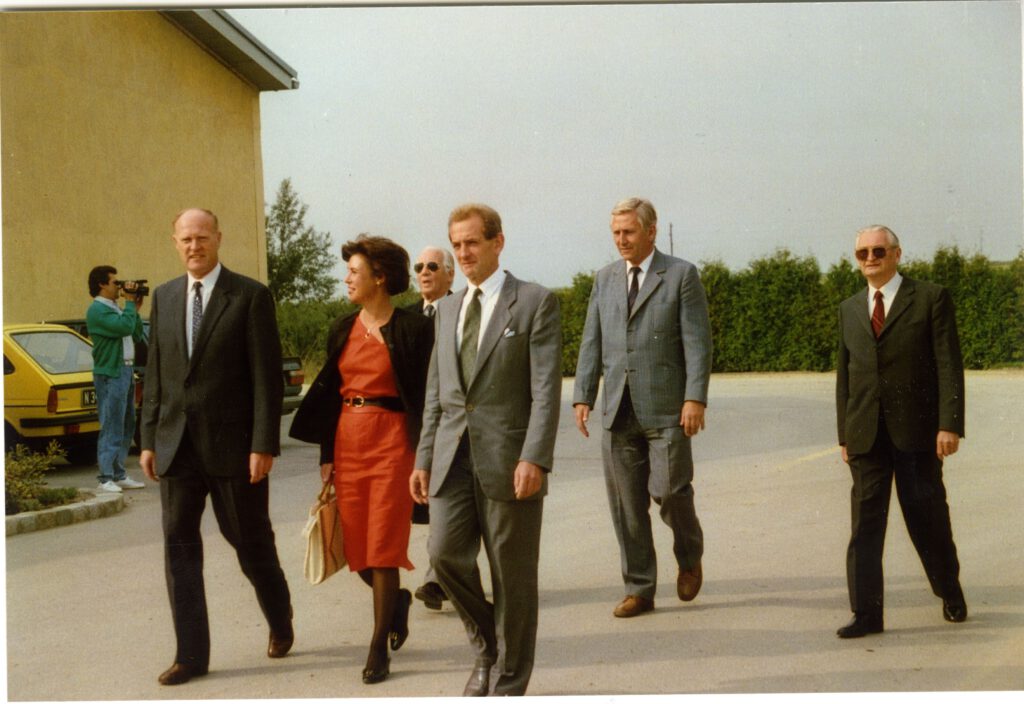
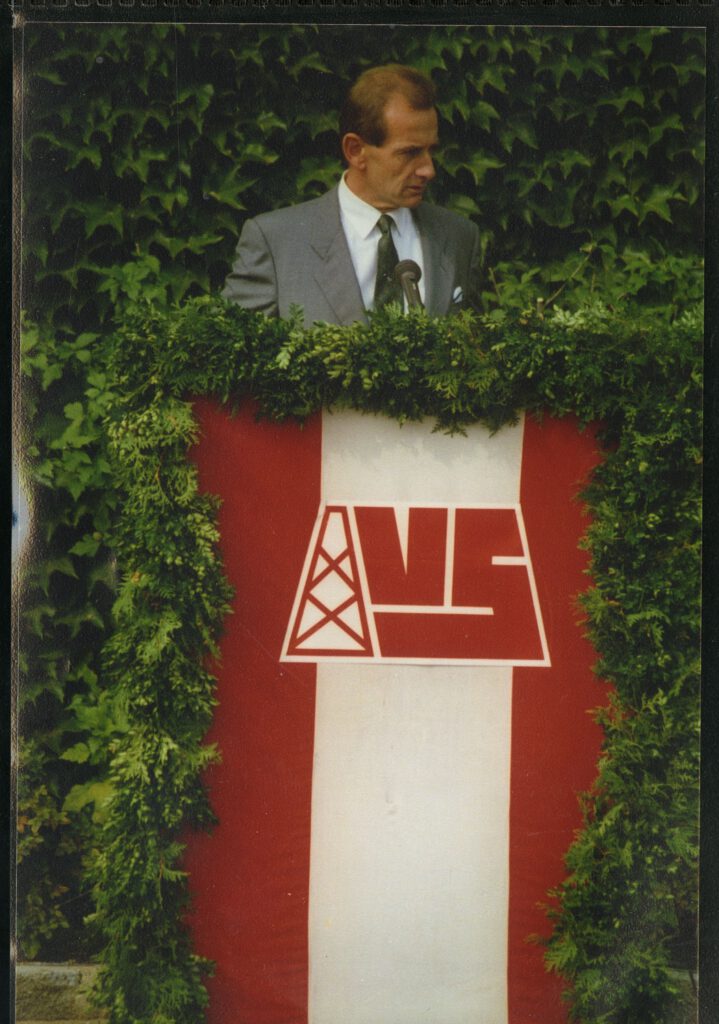
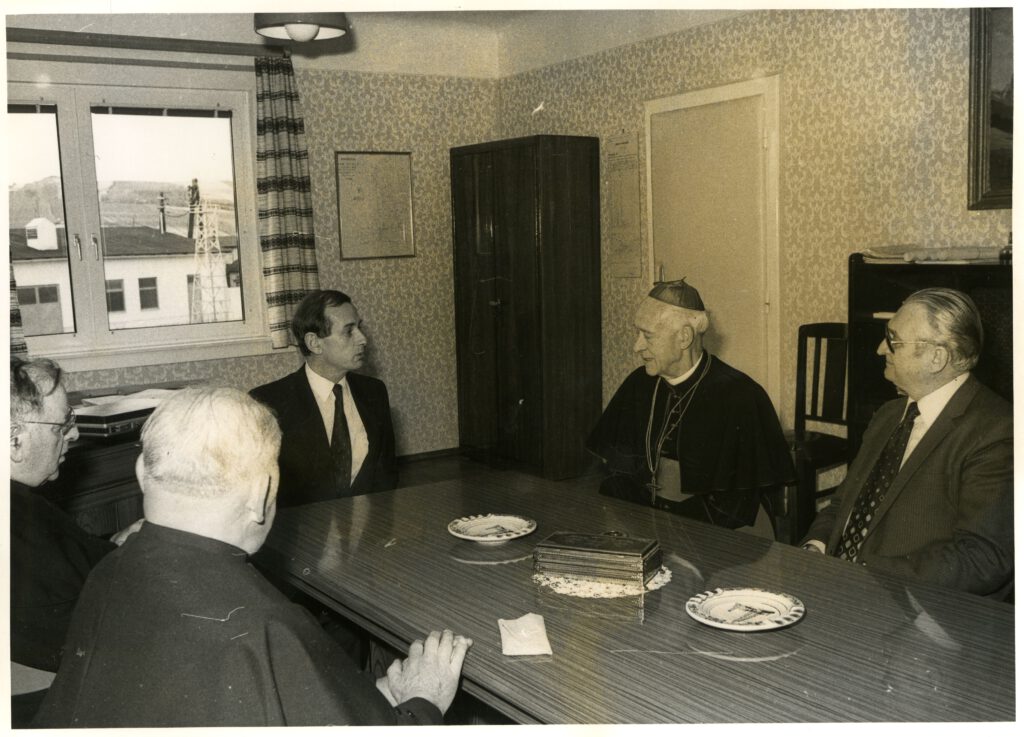
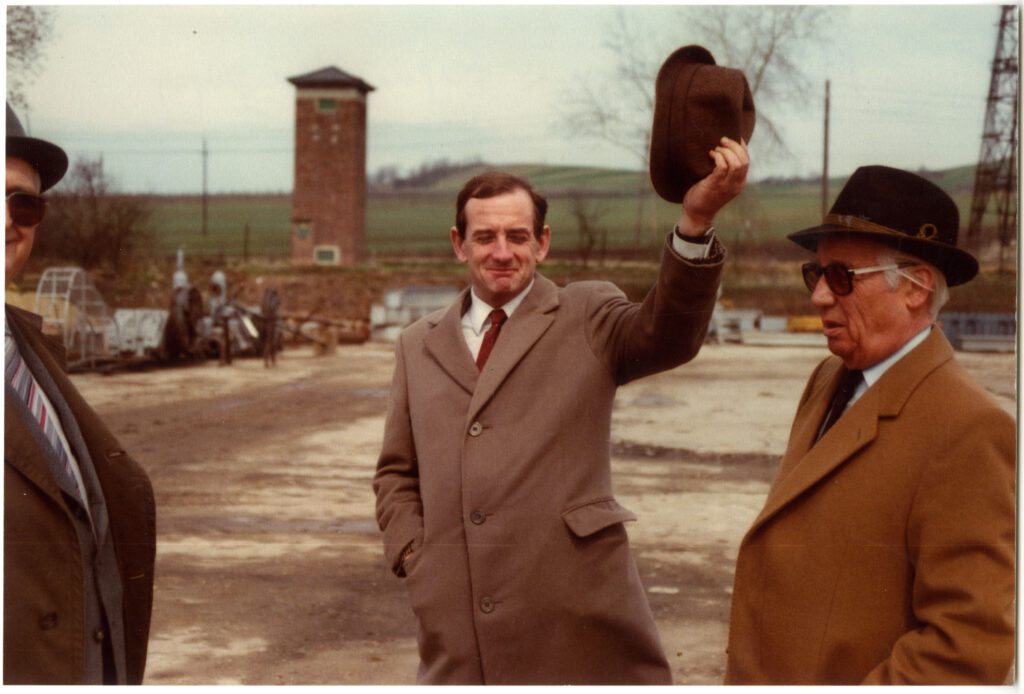
»#1 New Release in Petroleum Engineering« at Amazon (whatever this means, let’s keep it there!)
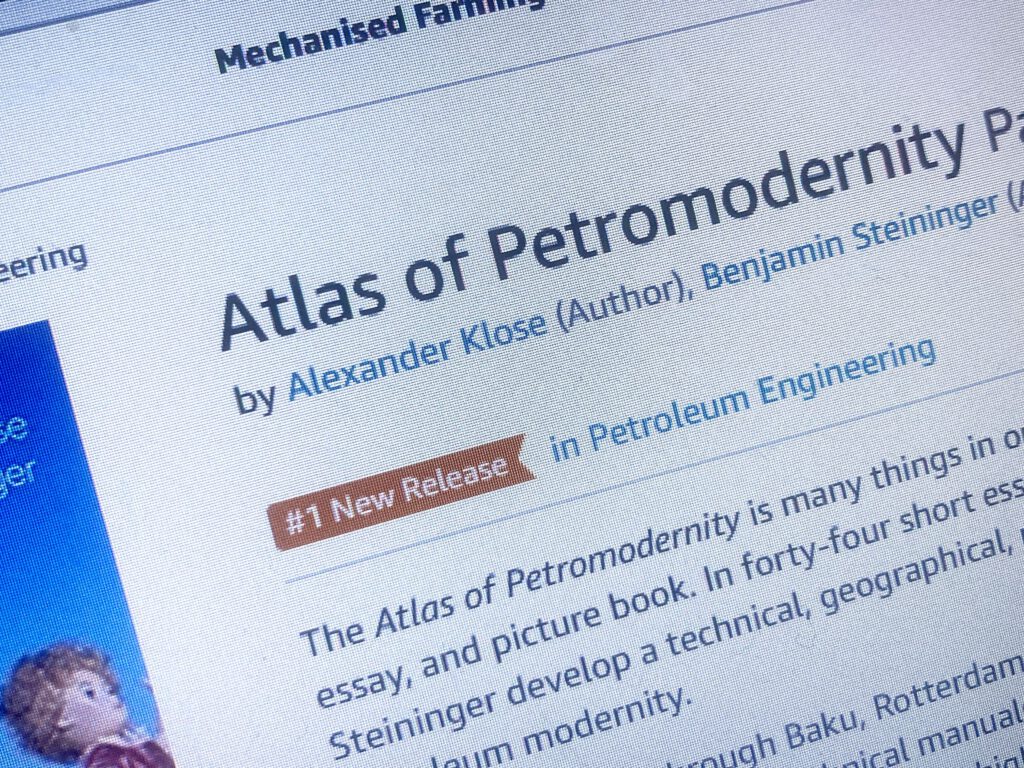
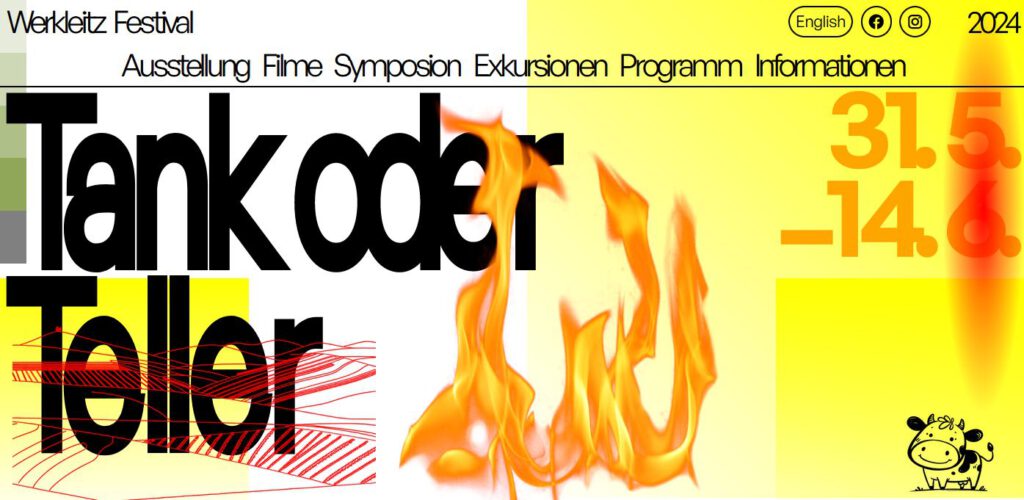
Alles fängt mit den Aktivitäten im und um den Boden an und mit dem direkten und indirekten Zuströmen der Energie der Sonne. Beileibe nicht zum ersten Mal wird es heute als krisenhaft empfunden. Dass Landwirtschaft, Kultur und Gesellschaft aufs Engste zusammenhängen, zeigen die auf einer „crazy wall“ versammelten Bilder der Landwirtschaft aus mehreren Jahrtausenden. Nichts hat in dieser langen Geschichte so weitreichende Folgen gezeitigt wie die Industrialisierung. Wie viel fossile Energie steckt in heutigen landwirtschaftlichen Produkten? Auf einer „detective wall“ zur Stickstoff-Verschwörung können Sie einigen zentralen Zusammenhängen dieser Veränderungen auf die Schliche kommen. In einem Pflanzregal im ersten Stock schließlich begegnen sich die Spur des Traktors – die auch auf das Schlachtfeld führt –, ein Kulturpflanzen-Quartett, die „glokale“ Geschichte des Zuckers und die historische Dynamik von Kollektivierung und Kapitalisierung.
(bald mehr!)
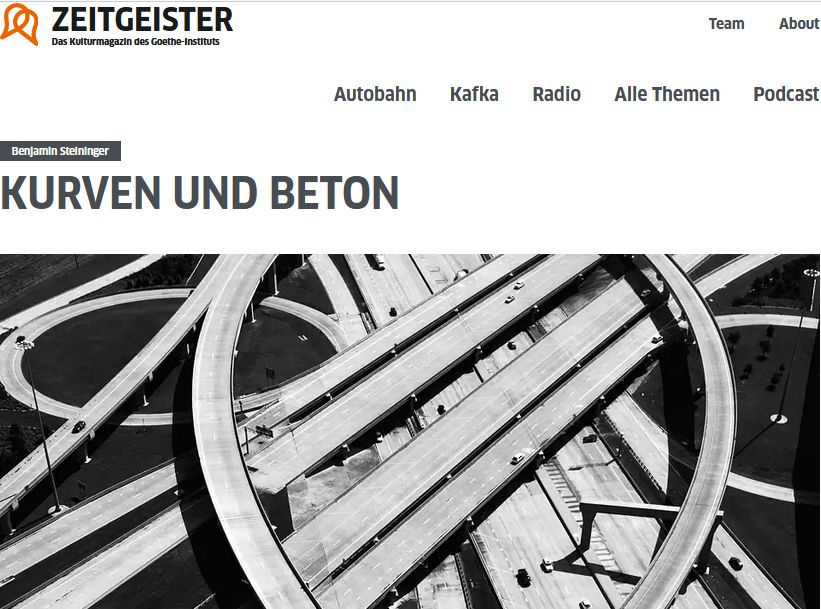
»Es gibt Dinge, die sind zu selbstverständlich, als dass man versteht, dass sie eigentlich zu kompliziert sind, um sie zu verstehen. Die Autobahn ist so ein „Ding.“ Und dabei geht es gar nicht nur um die offensichtlich ökologische oder die politisch-historische Belastung. Die Nazis haben die „Pyramiden des Dritten Reichs“ – mit Rainer Stommers mittlerweile selbst historischem Buchtitel – zwar bekanntermaßen nicht erfunden, aber sie haben sie doch maßgeblich gebaut. Und mit ihren Plänen, die Autobahn zur expliziten Inszenierung von „Landschaft“ einzusetzen, haben sie nicht nur Verkehrsentscheidungen, sondern auch Erfahrungsräume über Jahrzehnte festgelegt. Dies ist aber nur Teil einer Komplikation, die auch in ihren unauffälligeren Aspekten Wirkung hat.«
Link zum materialreichen Magazin »Zeitgeister – Das Kulturmagazin des Goethe-Instituts« » Autobahn« mit insgesamt dreiundzwanzig Beiträgen hier (englische Ausgabe hier)
English translation of our Atlas by Ayça Türkoğlu, updated and enlarged edition with a new introduction by Stephanie LeMenager and a new concluding chapter, »Zombie«, on the still not closed case of petromodern destruction. In print and open access!
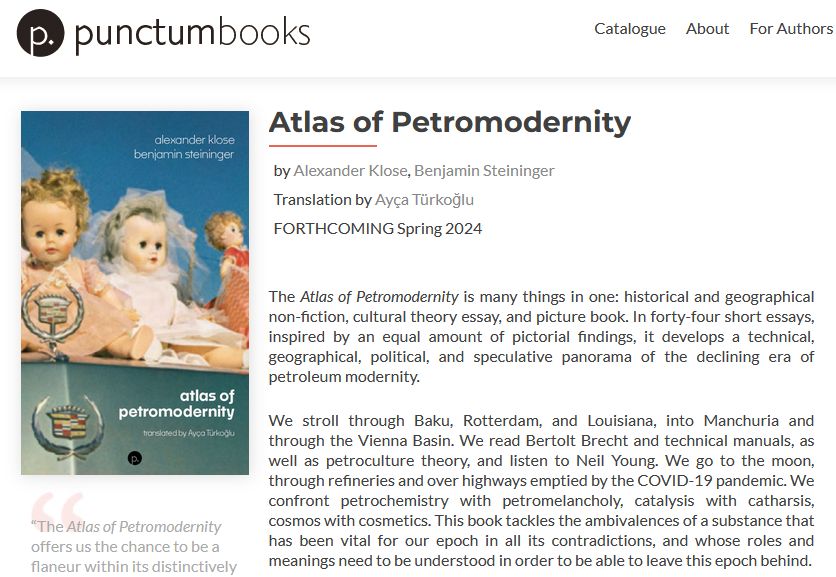
“The Atlas of Petromodernity offers us the chance to be a flaneur within its distinctively curated and therefore somewhat realistic world. Enter at your own risk, with the affinity for risk that may well define you, even still.” Stephanie LeMenager
For more details on publication, dates, and availability see here: punctumbooks.com
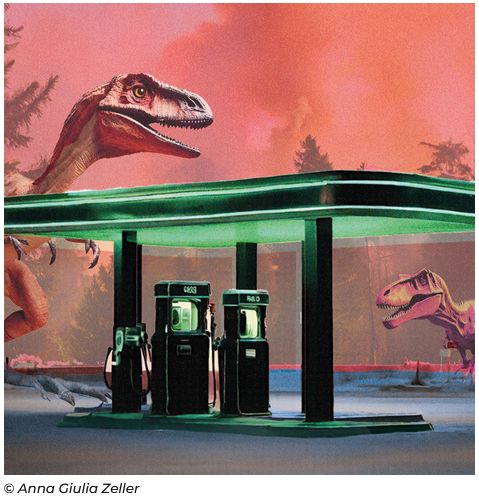
Kalte Asche und Petromelancholie. Energie ist nicht nur, was aus Leitungen kommt. Energieformen prägen Kulturformen – in ihrer materiellen Gestalt wie in ihren Denkmöglichkeiten. Darüber hinaus ist »energeia« seit Aristoteles eine Wirkkraft, die ein Potenzielles ins Sein bringt, etwas vor Augen führen kann – und damit eine genuin poetologische Kategorie. Was bedeutet es für die Literatur als energetische Kunst, dass sich ein Abschied von den Fossilkulturen abzeichnet?
Zu diesen Fragen fanden am 17.1.2024 zwei Diskussionsrunden im Brecht-Haus Berlin statt, eingeleitet von Steffen Richter. (mehr Infos)
17:30, Alexander Klose / Benjamin Steininger, »Petromoderne Permanenz und Wiederkehr«, Impulsvortrag und Gespräch mit Birgit Schneider.
20:00, »Energiekämpfe in der Gegenwart«. Mit Burkhard Spinnen (»Rückwind«, 2019), Susanne Stephan (»Der Held und seine Heizung. Brennstoffe der Literatur«, 2023) und Theresa Hannig (»Pantopia«, 2022). Moderation Matthias Bertsch.
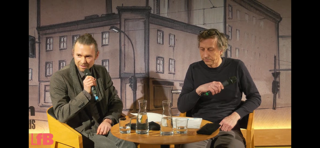
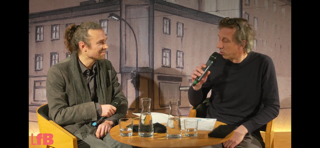
Video der gesamten Veranstaltung:
Ein dichter und inspirierender Einführungstext zur Veranstaltung von Steffen Richter, der am 16.01.2024 im tagesspiegel erschienen ist, kann hier abgerufen werden.
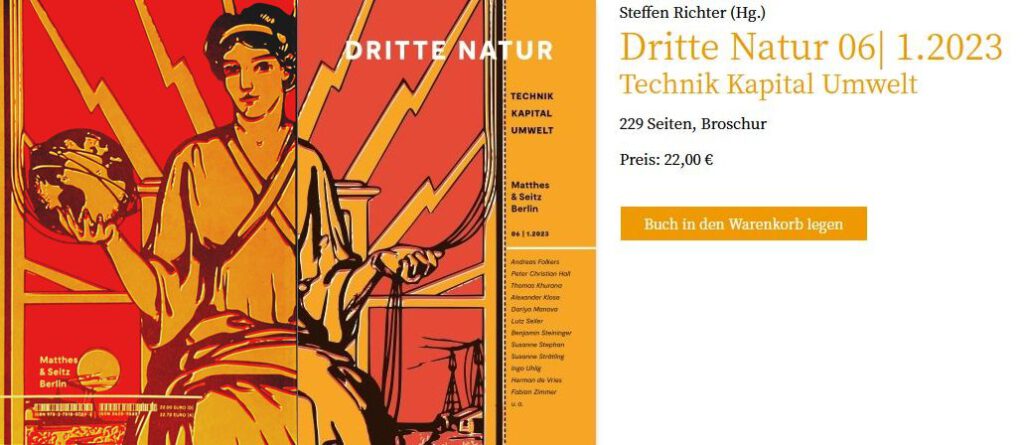
Seit dem russischen Krieg in der Ukraine ist sie Thema politischer, ökonomischer und kultureller Debatten: Energie. Sabotierte Pipelines, gebrochene Staudämme und beschossene Atomkraftwerke machen die Verletzlichkeit unserer Energieinfrastrukturen greifbar – und die unserer gesamten energieintensiven Lebensform. Das fossile Zeitalter hat Karbon- und Petromoderne ermöglicht und weitreichende Freiheitsroutinen etabliert. Zugleich aber untergräbt es unsere Lebensgrundlagen. Damit überlagern sich die vom Krieg angefachten Diskussionen über Versorgungssicherheit mit Debatten, die seit langem über die Notwendigkeit einer postfossilen Kultur geführt werden. Energieformen nämlich prägen Kulturformen. Und Geschichte lässt sich immer schon als Geschichte von Energiewenden und Konflikten zwischen Energieregimen lesen. Diese Ausgabe der Zeitschrift »Dritte Natur. Technik – Kapital – Umwelt« widmet sich in ihrem Schwerpunkt verschiedenen Facetten von Energiekulturen – etwa dem Energiemanagement der Finanzmärkte, autofreien Sonntagen in der alten Bundesrepublik oder Windradromanen der Gegenwartsliteratur.
[https://www.matthes-seitz-berlin.de/buch/dritte-natur-06-1.2023.html]
Walkthrough with curatorial advice from the future
Video: Alessia Taló. Sound: Bernd Hopfengärtner. Text: Alex Close&Bernd Hopfengärtner. Montage: Alex Close.
All the artworks in the show – Chapter 1: In bed with petroleum (slides)
All photos by Aad Hoogendorn, if not mentioned otherwise
All the artworks in the show – Chapter 2: Oil Encounters (15 slides)
All photos by Aad Hoogendorn
All the artworks in the show – Chapter 3: Toxic Legacies and the Museum of Petromodern Futures (15 slides)
All photos by Aad Hoogendorn, if not mentioned otherwise
All the artworks in the show – Chapter 4: Arts of Living on a Damaged Planet (8 slides)
All photos by Aad Hoogendorn, if not mentioned otherwise.
Exhibition spaces and scenography (slide show).
A description of all the artworks in the show can be found on the brutus website archive.
In bed with petroleum; Oil Encounters; Toxic Legacies and the Museum of Petromodern Futures; Arts of Living on a Damaged Planet — walltexts of all four chapters for download as pdf.